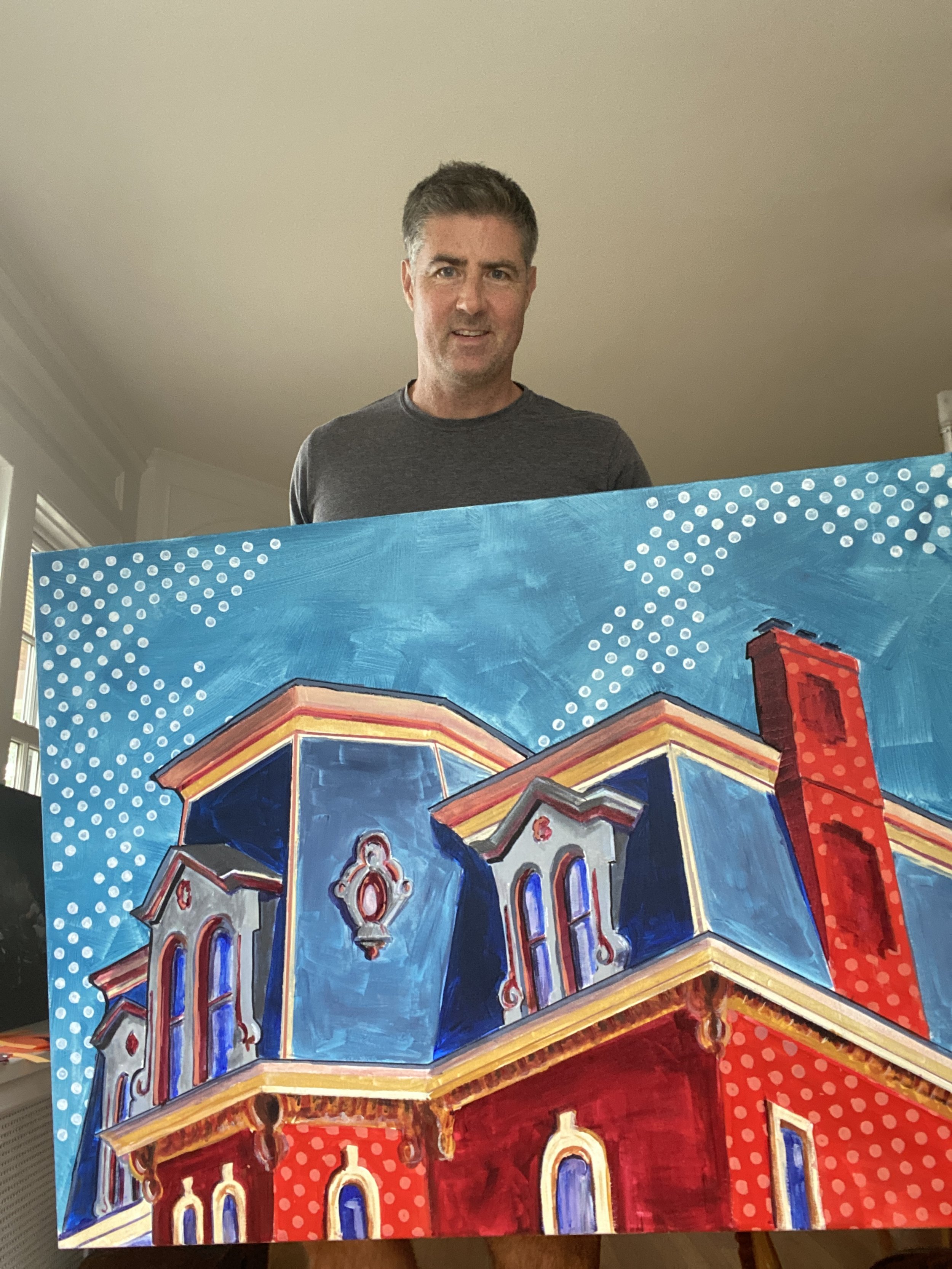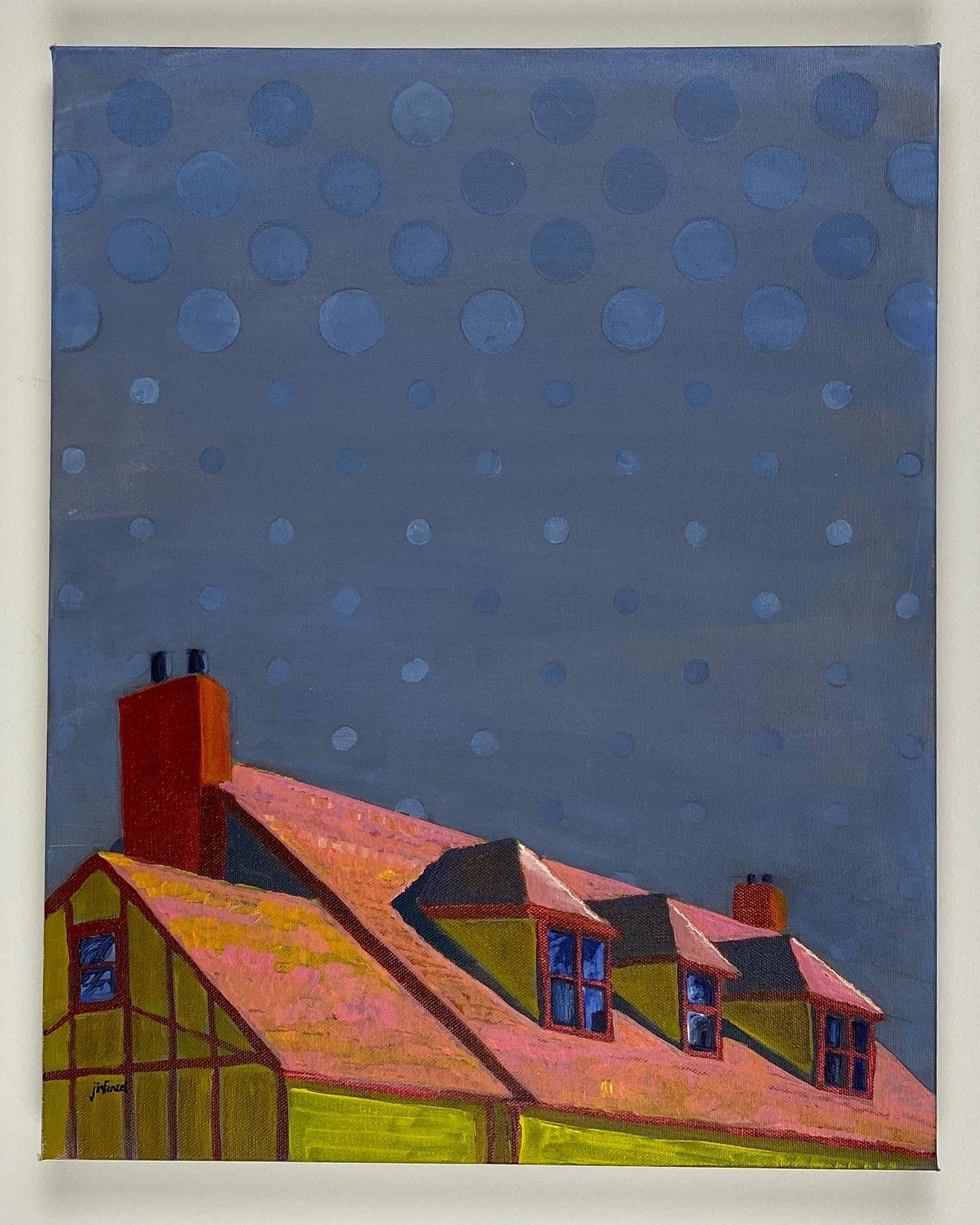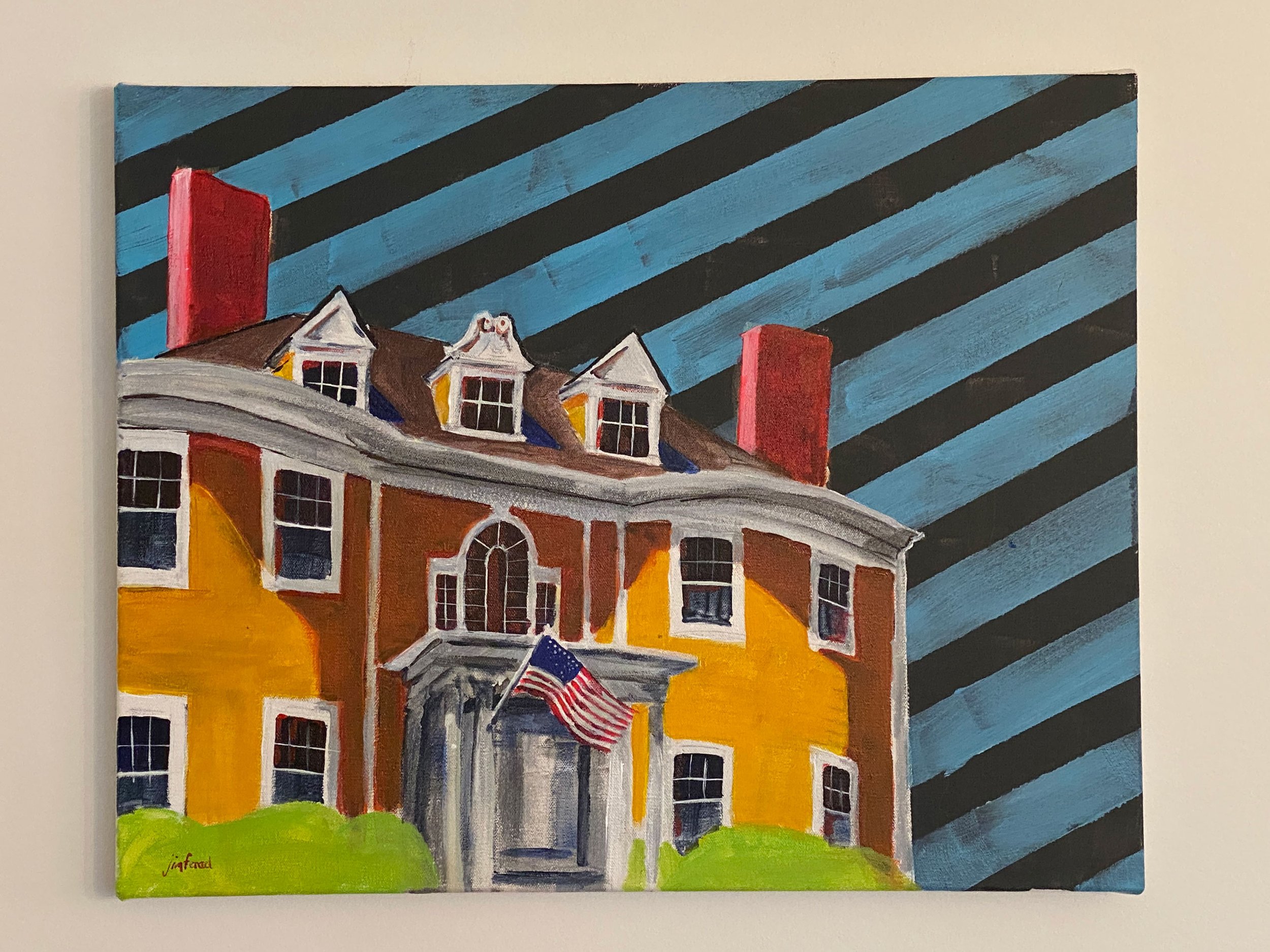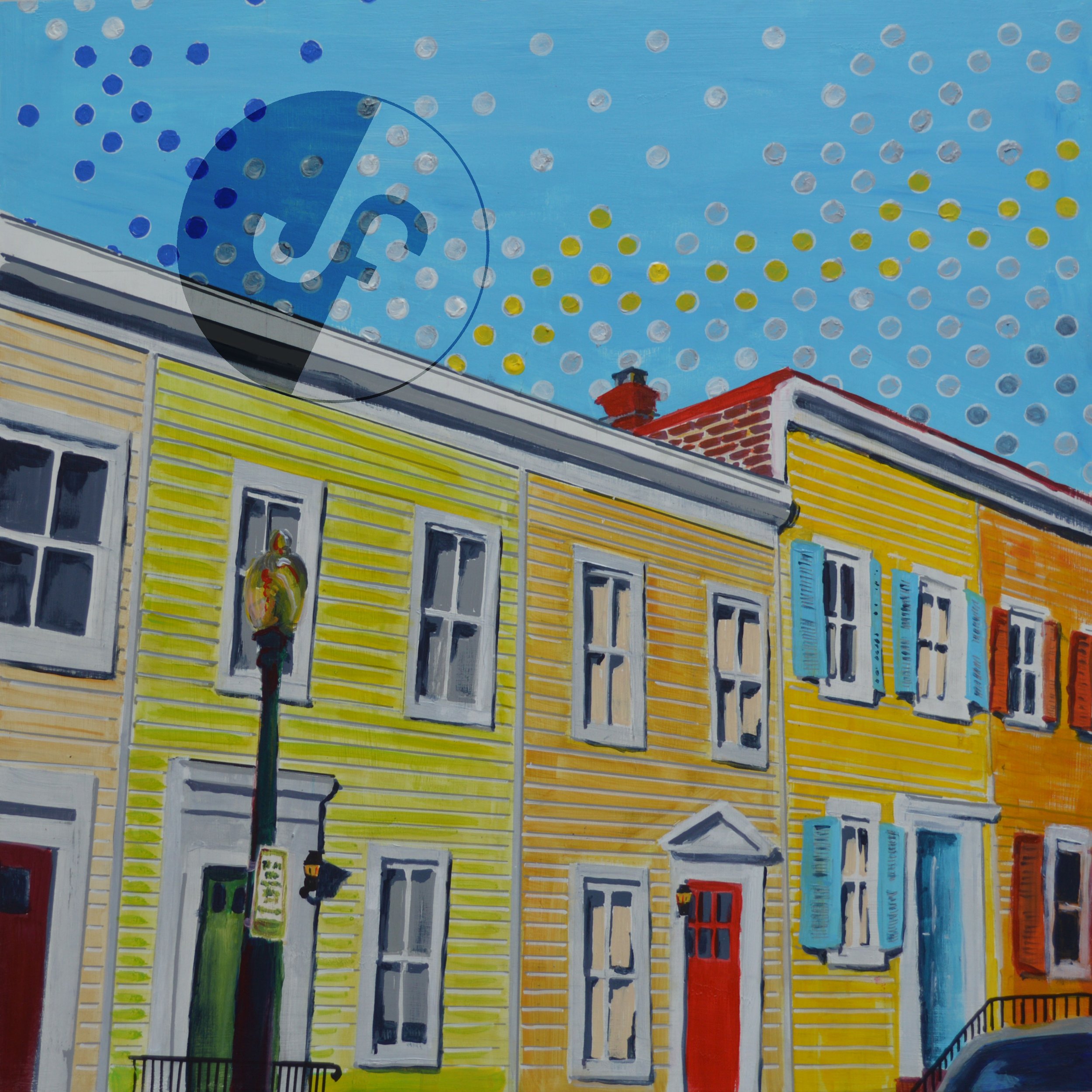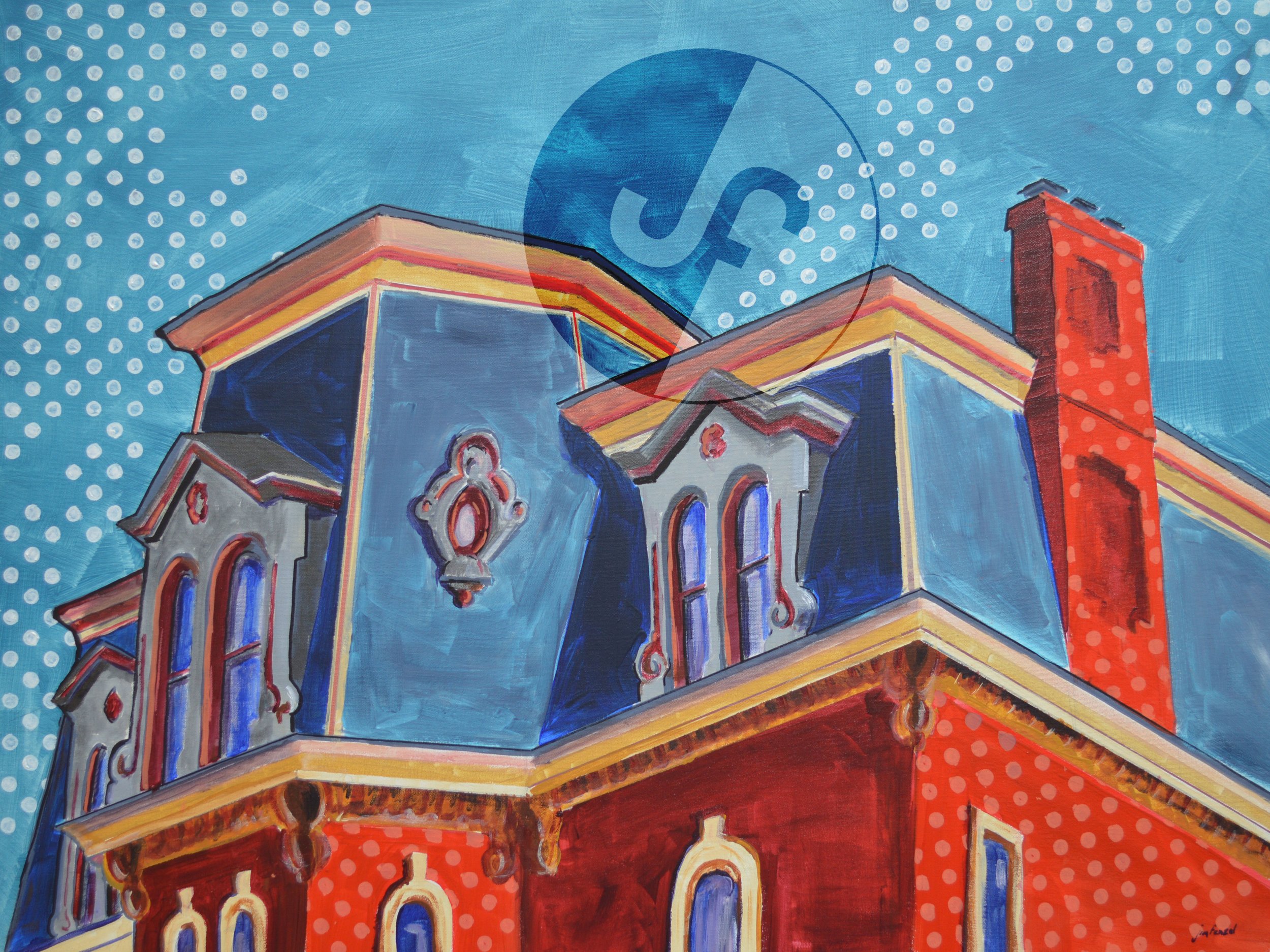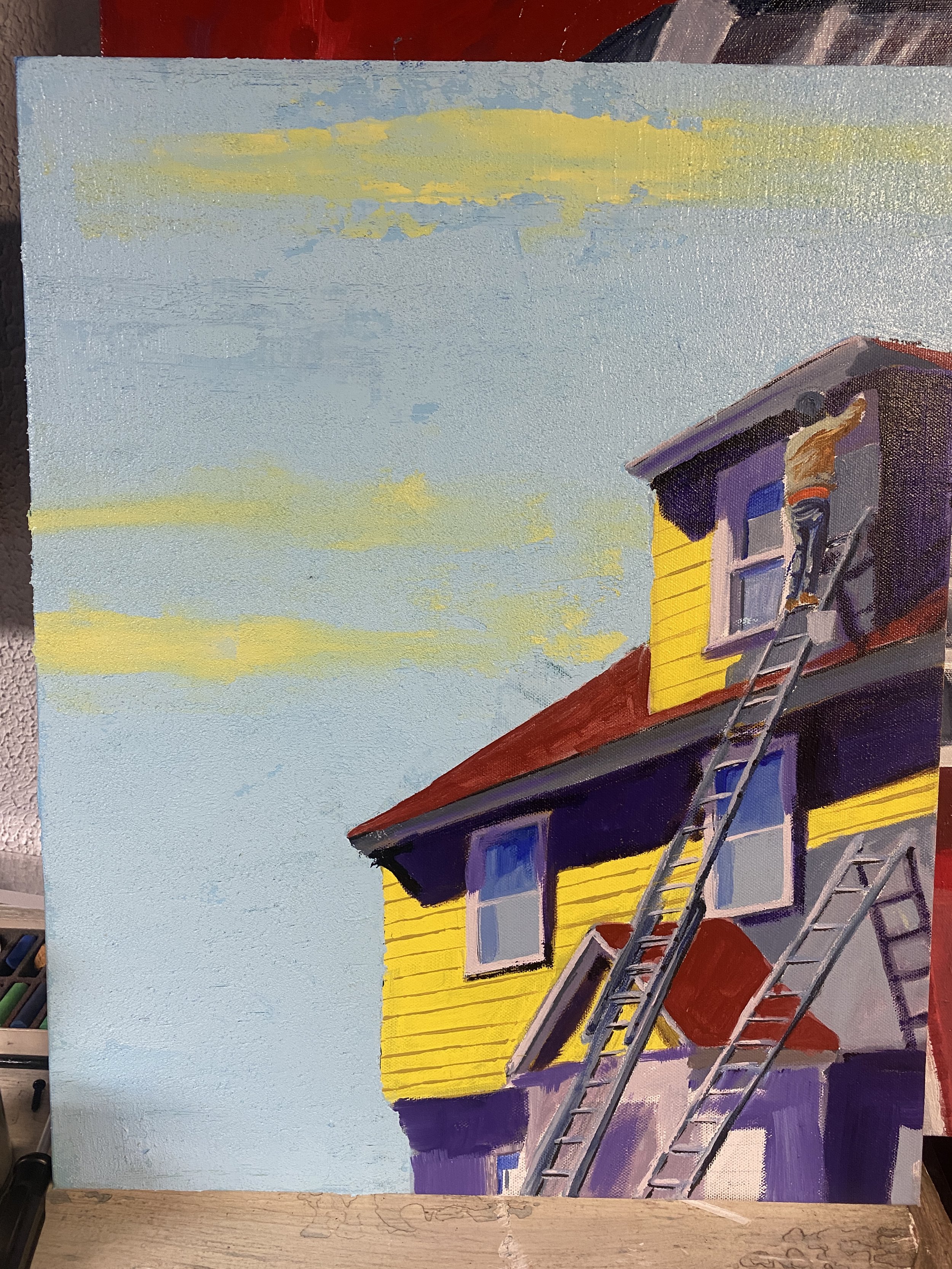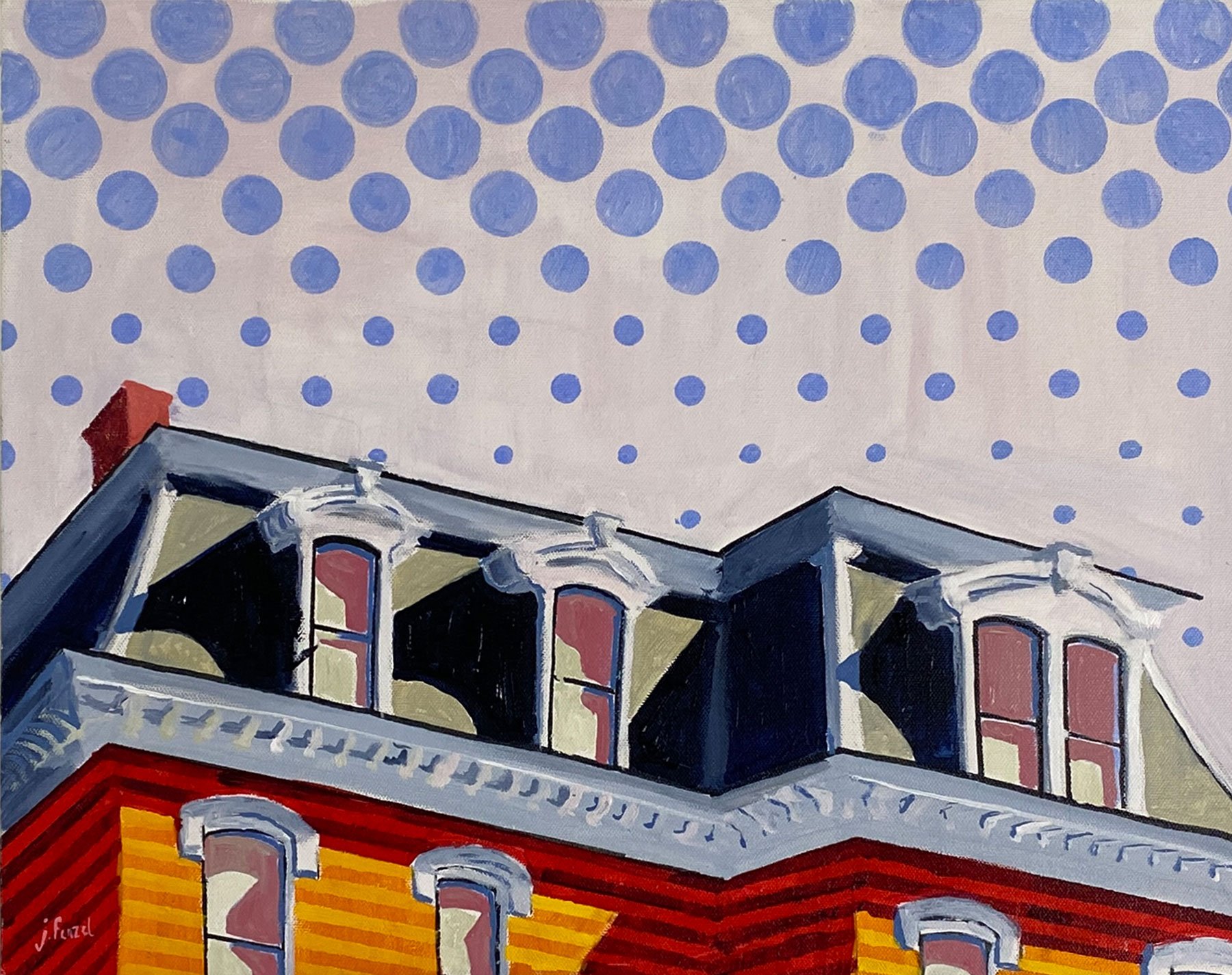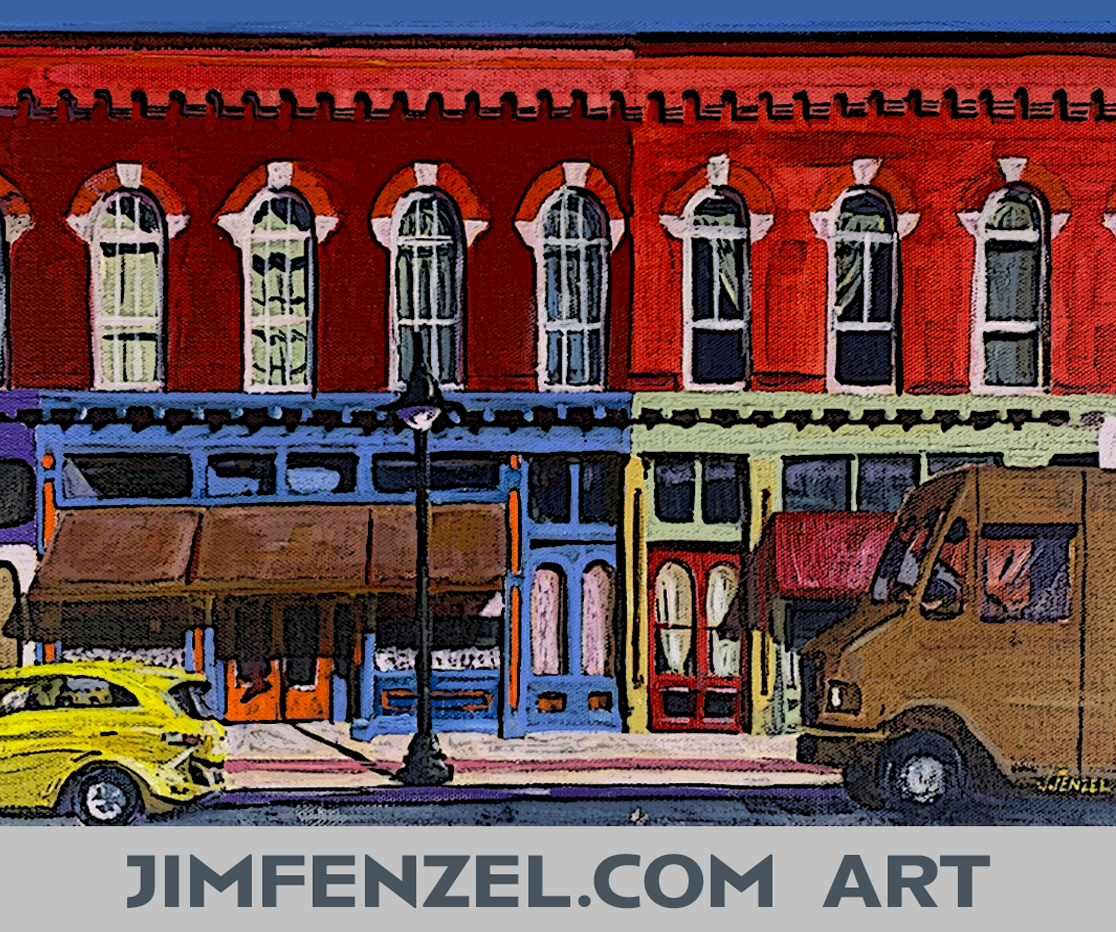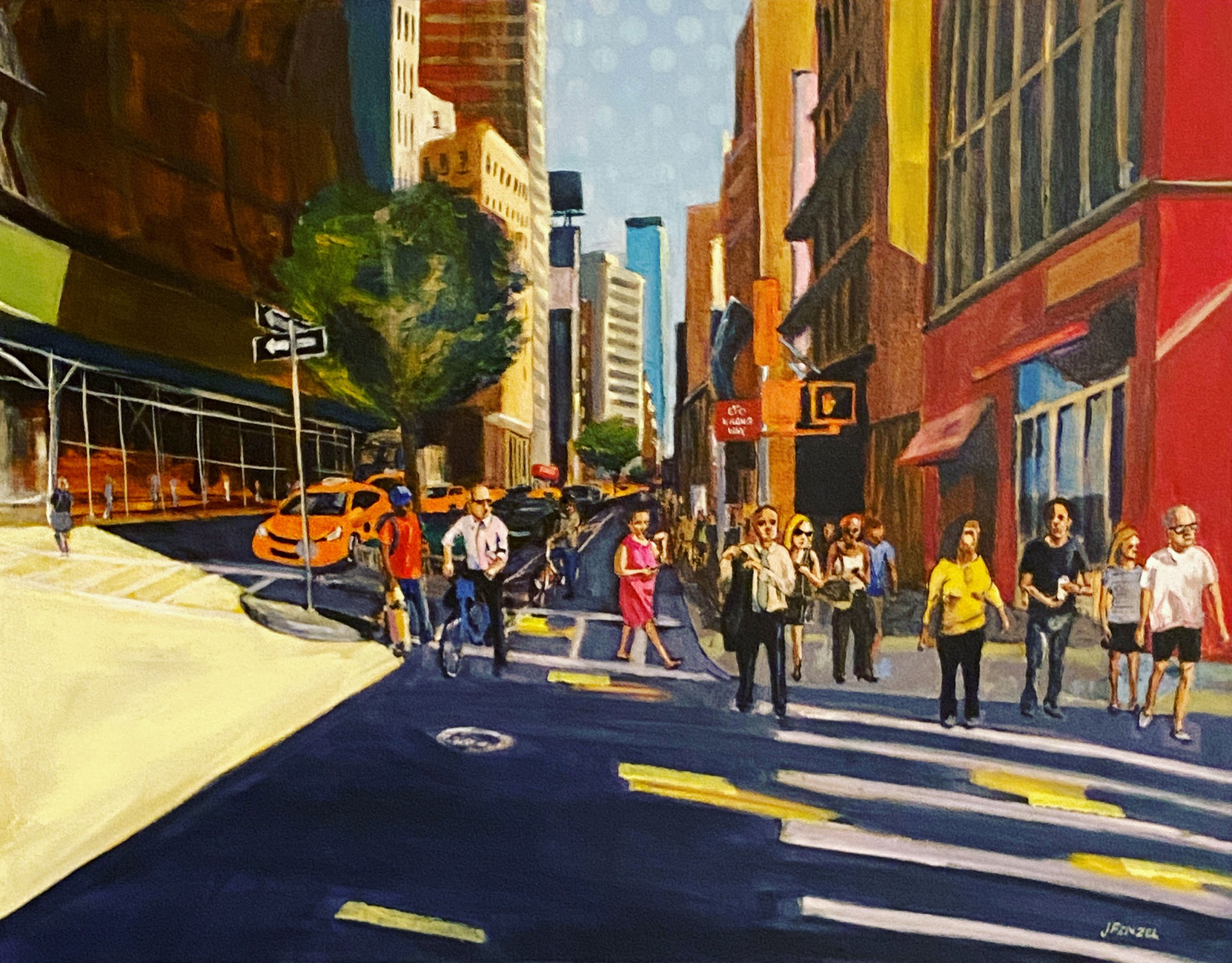This piece, “Empty”, was painted for the Kingston Gallery show: “Picnic With Ghosts.” August 2025
In constructing the piece, I merged a few concepts related to the theme “Picnic with Ghosts.” First, I was inspired by the oddity of the pandemic in the city when the typically relentlessly bustling streets were suddenly and eerily vacant. Second, I was inspired by that personal loss, the absence of a particular person from this world whom you would no longer spot in a crowd or glimpse across the avenue except as mistaken identity, illusion, or ghost.
Additionally, I pondered the depiction and definition of the “ghosts”. Were the ghosts the ones no longer with us or the ones trudging through their days? In this painting, a lone gold-tinted woman crosses the street amidst many dark, semi-transparent figures. Is she the one beyond this world or the one firmly in it? Are the streets she walks empty or full?
My sister lived in New York City for much of the decade that we did. When my oldest son was a baby, she watched him every Monday and they’d explore the city. She was always out and about, not secluded in a small apartment. And sometimes, at surprising times, we might catch sight of her on the city streets. In my memory, she’s beneath a ray of sun, even if not everyone else on the block is. She died in 2023 from a glioblastoma. I want to catch sight of her crossing an intersection one more time.













